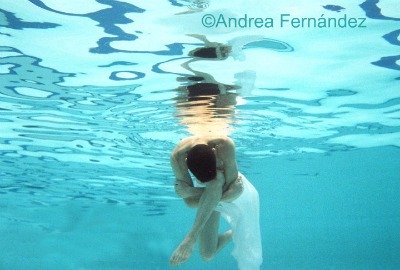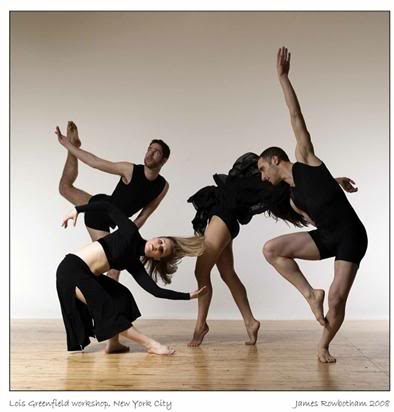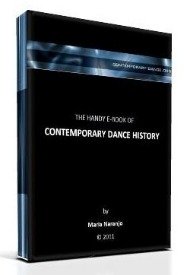DANCE TEACHING
There might be as many dance teaching ways as teachers are… yes, I know. The following is a summary of important aspects, ideas and conclusions that I’ve gathered over my years of dance teaching experience.
I share them with you with the hope that they might be of use in the task of developing your own way of transmitting dance. They don’t pretend to be definitive… remember that teaching is a creative activity too…
There are several aspects that determine how a dance class is constructed:
1. Aesthetical project.
2. Physical education.
3. Context.
1. Aesthetical project:
We’re talking about contemporary dance, right? So, one of your dance teaching tasks is to decide which elements of contemporary dance you will transmit, as this type of dance is so wide and permissive.
These are some of the elements I use:
-Wide range of shapes and dynamics, including a lot of smooth relationship with the floor.
-Development of kinesthesia.
-Flexible and healthy body.
-Movement quality as a result of effort economy.
-Dance training should be enjoyed, not suffered (the dance I teach is an art, not a sport).
- Transmission of a range of ethical values that are part of the aesthetical project, like the respect for the body and movement style of others, the application of a non hierarchical way of social relationship, the making of creative decisions according to a ‘fair’ judgment over the spectacular one, and so forth...
2.Physical education.
Now, we’re dealing with human beings and their bodies. It is absolutely important to keep in mind that a part of their health becomes somehow our responsibility during dance teaching.
I try not to forget to:
-Always adjust the level of demand to the physical skills of the students.
-Ask the dancers if they have particular physical or health conditions.
-Stick to a progressive teaching that doesn’t force students to take risks for which they are not physically prepared.
-Maintain an anatomical and physiological perspective, according to medical statements.
3. Context.
The place and the audience for your dance teaching will demand different approaches. So remember:
-Adapt your class to the type of student you have (amateur, professional, kids, teens, adults…?
-Establish the aim of the class in a long and short term (what’s the goal of each class, what’s the goal of the process of educating that dancer)
STRUCTURE FOR A DANCING CLASS
The following is the structure I use to organize the content of my class. It has seven different parts but I don’t always include them all. As I said above, it is important to adapt to each dance teaching situation.
So, for example a class for professionals (or students preparing for that) will be longer (about two hours) and will include all the components of this structure. A class for kids or amateurs in a gym will be much shorter and will skip steps 3, 4 and 6, a part from having steps 1 and 7 a lot shorter.
1. Relaxing – Concentrating – Visualizing
2.Warm-up
3. Strengthening
4. Break
5. Phrasing
6. Jumping
7. Stretching – Relaxing – Cooling down

1. Relaxing – Concentrating – Visualizing
Relaxing is important in this type of dance for different reasons:
-Technically talking, it allows the dancer to optimize the use of her/his energy and carry as few ‘parasite tensions’ as possible while dancing.
-It is also important to soften the muscular tone, which creates the smooth feeling of the particular style of contemporary dance I teach.
-In physiological terms, it is in many cases a necessary condition to develop flexibility.
-In psychological terms, it should help in enjoying the practice a lot more.
Concentrating will prepare the mind to a better performance.
Visualizing is a special characteristic of contemporary dance training. It focuses in perceiving body and movement mental images from a kinesthetic perspective (i.e. from the dancer’s inner perception of his body and movement and not from their outside visual aspect).
General aims:
-Neutralize the dancer’s position.
-Activate body and movement mental images.
-Stimulate body locally, focusing on the movement of joints separately.
-Stretch softly to begin stimulating muscles.
Characteristics:
Space: low level (on the floor, lying…) and middle level (sitting, on four supports, kneeling…), in place.
Time: moving very slowly or static positions, no rhythmic patterns.
Dynamic: soft, loose, weight given to gravity.
2. Warm-up
I’ve heard a theory about the warm-up in physical activities and dance teaching that says that the warm-up is not necessary. If you feel attracted by this trend, inform yourself deeply before you guide others in the practice of dance.
(I just asked a renowned physician about the subject and this was his answer: if a 40 years old man jumps from the sofa and runs to the football field to copy what he just saw Maradona doing, this is what could happen: 1.he falls down the stairs because his mind is still clunky, 2. he bends an ankle when hitting the ball, 3. he tears a muscle when rising his leg, 4. he ends with a heart attack caused by the explosive effort…!)
I personally believe in this physician’s point of view. Body is resistant, but in dance teaching we have the responsibility of taking precautions.
Most of the time we deal with young and prepared people, but still, they want to have a long life as dancers, so it is important to take care of their bodies.
Also, as enjoying the class is a chosen feature of my style of dance, I stick to the good old ways… (I feel much better when training with a progressive method). So my dance teaching always includes a second part of the class with the following aims and characteristics:
General aims:
-Activate the heart and cardiovascular rhythm.
-Activate the connection of the extremities of the body with its center.
-Work on the mental image of the entire body as a unity.
Characteristics:
Space: levels exchange, short paths in scenic space.
Time: slow and rhythmic.
Dynamic: fluid, ‘legato’.
3. Strengthening
This part of my dance teaching style is designed especially for professional dancers. It is made out of exercises that should enhance some of their general physical conditions like force, stamina or flexibility.
I use two different strengthening models:
1. Bar type
2. Floor type
1. Bar type:
Four to seven exercises that focus on the legs’ work. I follow a very simple ballet bar structure and combine it with contemporary or modern dance vocabulary.
Space: high level.
Time: from slow to middle speed, rhythmic patterns.
Dynamic: varied, according to each sequence.
2. Floor type:
Four to seven exercises, (lying on kneels, sitting…) that focus on the trunk’s work. I follow a Martha Graham’s floor structure and combine it with contemporary dance vocabulary.
Space: low and middle level, rhythmic patterns.
Time: from slow to middle speed.
Dynamic: varied, according to each sequence.
4. Break
I do a five minutes break only during classes that last more than one hour and depending one the students attitude.
When doing it after the strengthening part, it is usually a time for the dancers’ own stretching.
Sometimes I do the first part of the class long (almost like a complete yoga session of 45 minutes). When doing so, I do the break after that (between relaxing and warming-up) for the dancers’ personal needs (drinking water, putting or taking off socks, changing clothes, going to the bathroom…!)
5. Phrasing
This is the part of the class when we actually feel more like ‘dancing’. I propose choreographic fragments that cross all the scenic space available, mixing levels, fronts and directions.
The general aim of this part is to work the interpretative skills of the dancers, considering:
-Memory.
-Technical virtuosity and pureness of movement.
-Expression.
Characteristics:
Space: wide traveling in space, levels and fronts exchange.
Time: middle speed to fast, rhythmic patterns or no rhythm.
Dynamic: assorted.
6.Jumping
Jumping is often included in phrasing, mostly when the classes are short. But, taking a special time to study jumps separately works well with professional dancers.
To follow the class progressive method, it is better to create jumping phrases that cross space. This will produce a ‘cardio-vascular climax’ on the dancers that gives them the feeling of a conclusion of the class.
Space: wide traveling in space, mainly high level.
Time: fast, rhythmic patterns.
Dynamic: liberated flow.
7. Stretching – Relaxing – Cooling down
Now that they’re sweaty and have accelerated breathing I conclude the class by guiding them to cool down for about five to ten minutes.
Depending on the resting time, I decide to stretch or to go directly to a relaxing position.
Stretching now is different from stretching at the beginning of the class. Now that muscles are warm, I propose exercises in pairs, so that dancers help each other to improve their muscles elasticity.
If the resting time is too short, I guide them directly to lie on the floor, elevate legs and arms (or lean them on a wall), stay still and give themselves some time to return to a physical and mental quietness.

There’s still a lot about dance teaching I could share with you. I’ll be posting all that information at our site in time. Just let me know if you have special interest in a particular topic.
Versión en Español: La enseñanza de la danza
Return from Dance Teaching to Contemporary Dance Home Page
The handy e-book of CONTEMPORARY DANCE HISTORY:
The Dance Thinker is our occasional E-zine. Fill in the form below to receive it for free and join us.
Read:
"The Dance Thinker"
BACK ISSUES
Post contemporary dance announcements (workshops, auditions, performances, meetings and important news... it is free.)



